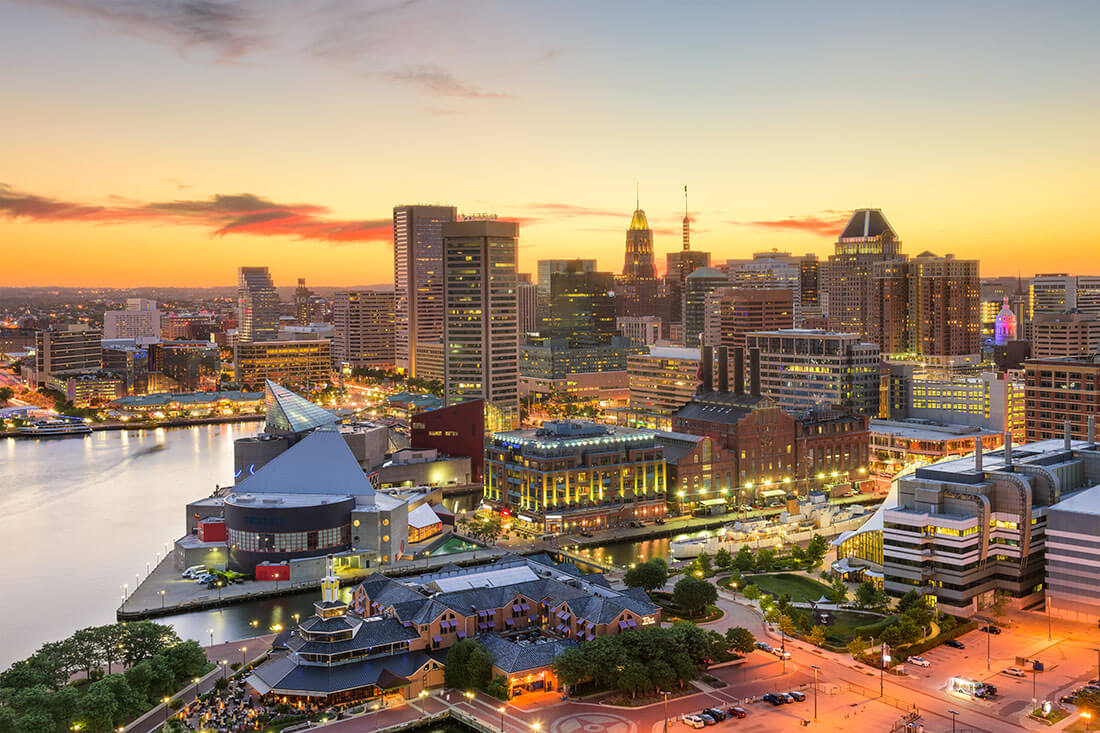Friday Five
Dec. 19, 2025 | This week's latest on Maryland business and government
1 — Peña-Melnyk elected unanimously as House speaker, making history in the process
Maryland’s General Assembly convened a special session on Tuesday, in part to select a new speaker of the House of Delegates after longtime leader Adrienne A. Jones stepped down. Lawmakers overwhelmingly chose Delegate Joseline Peña-Melnyk to lead the chamber. Backed early on by her Democratic colleagues and ultimately elected unanimously, Peña-Melnyk becomes the 109th speaker, the first Afro-Latina and first immigrant to hold the role in Maryland’s legislature and only the second woman to do so. She represents regions of Prince George’s and Anne Arundel counties and has previously chaired the House Health and Government Operations Committee.
Looking ahead: Peña-Melnyk inherits a House facing challenges, such as a significant budget deficit and policy decisions on health care and other priorities. In remarks after her election, she emphasized inclusive leadership and pledged to work across the aisle.
2 — Climate study, energy planning, data center bills become law after Moore vetoes are overridden
During Tuesday's special session of the Maryland General Assembly, lawmakers overturned a series of vetoes by Governor Moore to enact several climate and energy-related measures, including approving legislation to study the economic and environmental costs of climate change through the RENEW Act, require analysis of data center impacts on energy and communities, and establish a new energy planning office, all aimed at providing policymakers with detailed information to guide future decisions.
On data center study: After Governor Moore vetoed a proposed data center impact study over budget concerns earlier this year, a growing bipartisan coalition has now successfully overridden his decision as interest in data centers accelerates across Maryland. Lawmakers and advocates say the lack of data is hindering smart policy on energy costs, grid reliability and environmental impacts.
3 — Marylanders split on resolving budget shortfall, pessimistic about Key Bridge rebuild
A recent poll from the University of Maryland, Baltimore County finds Maryland residents sharply divided over how to address a growing budget shortfall, with many favoring spending cuts or a mix of cuts and revenue increases while few support relying mainly on tax hikes, and there’s significant skepticism about how quickly the collapsed Francis Scott Key Bridge can be rebuilt. Most respondents believe the bridge’s loss has substantially affected life in the Baltimore region and expect reconstruction to take five to ten years, or longer, reflecting waning optimism about a swift resolution as projected costs have ballooned and federal support remains uncertain. The survey highlights deep public concern about fiscal challenges facing state leaders and doubt that major infrastructure projects like the Key Bridge will be completed soon.
Bay Bridge: The Maryland Transportation Authority Board unanimously approved replacing the 73-year-old Chesapeake Bay Bridge. A new bridge would double lanes, add shoulders and increase height for larger cargo ships. Estimated cost has doubled to be between $14.8 and $16.4 billion. Construction is not expected to begin before 2032 and still requires federal approval.
4 — Governor Moore’s commission to redraw Maryland’s congressional lines, Ferguson calls the group ‘irresponsible’
Governor Moore’s redistricting advisory commission advanced a plan to redraw Maryland’s congressional maps despite opposition from Senate President Bill Ferguson and widespread public resistance, prompting criticism that the process has lacked transparency and pre-determined outcomes. “We did not engage in a thoughtful, informed conversation that would have included, at the very least, testimony from the Office of the Attorney General, or our State and local boards of elections,” Ferguson said. “Pushing forward a pre-ordained recommendation outside the public eye is irresponsible and lacks transparency.” Commission leaders, including Chair Sen. Angela Alsobrooks, defended the move as necessary to ensure fair representation amid national shifts, while some members and Republicans argued it unfairly targets the state’s lone Republican seat and diverts attention from pressing economic and budgetary issues.
Bigger fish to fry: As highlighted in the recent UMBC poll, Marylanders largely prioritize the addressing of that state's fiscal and infrastructure concerns over that of political redistricting.
5 — Lawmakers approve recommendations to protect Maryland from Trump amid $1.2B deficit
Acknowledging the newly forecasted $1.2 billion structural deficit for fiscal year 2027, the General Assembly‘s Spending Affordability Committee approved recommendations Thursday to cut and stockpile funds to protect the state from further negative actions that could come from the Trump administration. During the 2025 legislative session, Governor Moore and the General Assembly addressed a nearly $3 billion budget deficit through a series of cuts, as well as new and increased taxes and fees that were projected to bring in approximately $1.6 billion in revenue for the state.
Difficult choices loom: David Romans, a fiscal analyst for the nonpartisan Department of Legislative Services, told the committee that lawmakers will need to find $600 million in “ongoing savings,” or cuts, in the forthcoming budget negotiation process. He also recommended they maintain at least 8 percent of General Fund revenues (or $2.2 billion) in the state’s Rainy Day Fund, while maintaining a minimum General Fund balance of at least $100 million.
Advancing inclusive partnerships for a Maryland where all businesses and their communities thrive
The Maryland Chamber of Commerce is the state’s leading business advocacy organization — committed to working with our alliance of partners on critical public policy issues. With a focus on economic development and grassroots advocacy, we impact policies that directly affect Maryland business.

